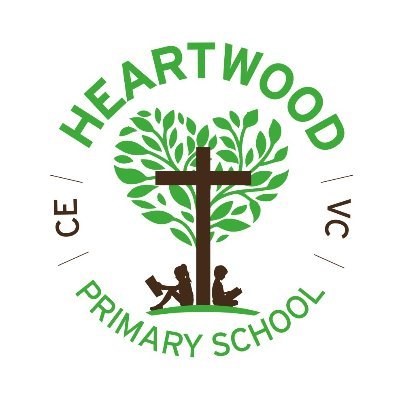Computing
"In a world that's increasingly run on technology, computer science is a liberal art that every student should be exposed to, regardless of their path in life." - Hadi Partovi
The aims and objectives of Computing at Heartwood are in line with the National Curriculum and ensure all children:
*can understand and apply the fundamental principles and concepts of computer science, including abstraction, logic, algorithms and data representation
*can analyse problems in computational terms, and have repeated practical experience of writing computer programs in order to solve such problems
*can evaluate and apply information technology, including new or unfamiliar technologies, analytically to solve problems
*are responsible, competent, confident and creative users of information and communication technology.
Intent
At Heartwood Primary School, we aim to prepare our learners for their future by giving them the opportunities to gain knowledge and develop skills that will equip them for an ever-changing digital world. Knowledge and understanding of computing is of increasing importance for children’s future, both at home and for employment. Our Computing curriculum focuses on a progression of skills in digital literacy, computer science, information technology and online safety based on a model by Teach Computing. This gives children the opportunities to express themselves, develop, and present their ideas through information technology. These strands are revisited repeatedly through a range of themes during children’s time in school to ensure their learning is embedded and skills are successfully developed. Our intention is that Computing also supports children’s creativity and cross-curricular learning to engage children and enrich their experiences in school. Children will also learn about key figures in the technical world and their impact on how we use technology today.
Implementation
Our whole curriculum is shaped by our school vision of making a difference. We teach using the scheme of work suggested by Teach Computing, supported by a clear skills and knowledge progression. This ensures that skills and knowledge are built on year by year and sequenced appropriately to maximise learning for all children. As part of information technology, children learn to use and express themselves and develop their ideas through computing. For example, writing and presenting as well as exploring art and design using multimedia. Within digital literacy, children develop practical skills in the safe use of computing and the ability to apply these skills to solving relevant, worthwhile problems. For example, understanding safe use of the internet, networks and email. In computer science, we teach children to understand and apply the fundamental principles and concepts of computer science, including abstraction, logic, algorithms and data representation. Also, to analyse problems to computational terms, and have repeated practical experience of writing computer programs in order to solve such problems. We also teach a progression of computing vocabulary to support children in their understanding. At Heartwood Primary, we give children access to a wide range of good-quality resources and provide cross-curricular opportunities for children to apply their computing knowledge and skills. Online safety is taught both within Computing lessons and Life Skills lessons. Online safety procedures are communicated with all staff and parents. Our computing curriculum is further enriched by experience days to engage children in first-hand, hands-on experiences outside the classroom to create lasting memories for children to hook new learning onto.
Impact
The implementation of this curriculum ensures that when children leave Heartwood Primary School, they are competent and safe users of computing with an understanding of how technology works. They will have developed skills to express themselves, be creative in using digital media, and be equipped to apply their skills in computing to different challenges going forward.
Online Safety
In simple terms, online safety refers to the act of staying safe online. It is also commonly known as internet safety, e-safety and cyber safety. It encompasses all technological devices which have access to the internet from PCs and laptops to smartphones and tablets.
We must give our children the declarative and procedure knowledge and vocabulary to keep themselves safe online.
At Heartwood online safety is:
- Taught as part of computing lessons,
- Taught within each Computing session and when using technology,
- Taught on the first Monday of every half term in Life Skills sessions, this will respond to current issues and build on the class' prior learning,
- Taught in immediate response to any media, parent, pupil disclosures and relevant concerns,
- Taught through online safety book spine.
Examples of enrichment this year include:
-
Communication and Collaboration: using a range of digital tools to collaborate on shared projects, including document sharing and feedback platforms.
-
Spreadsheets: exploring data entry, formula use, and basic data analysis, applying these skills to real-world scenarios like budgeting and surveys.
-
Webpage Creation: designing and building their own web pages, learning the basics of layout, navigation, and responsible content sharing.
-
Research: developing critical thinking and digital literacy skills while conducting structured online research, learning how to assess sources and synthesise information.
-
Maths through Computing: integrating maths skills with computing, particularly through spreadsheet modelling and coding-based problem-solving.

